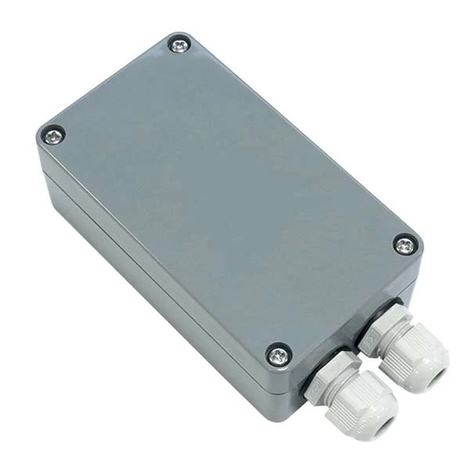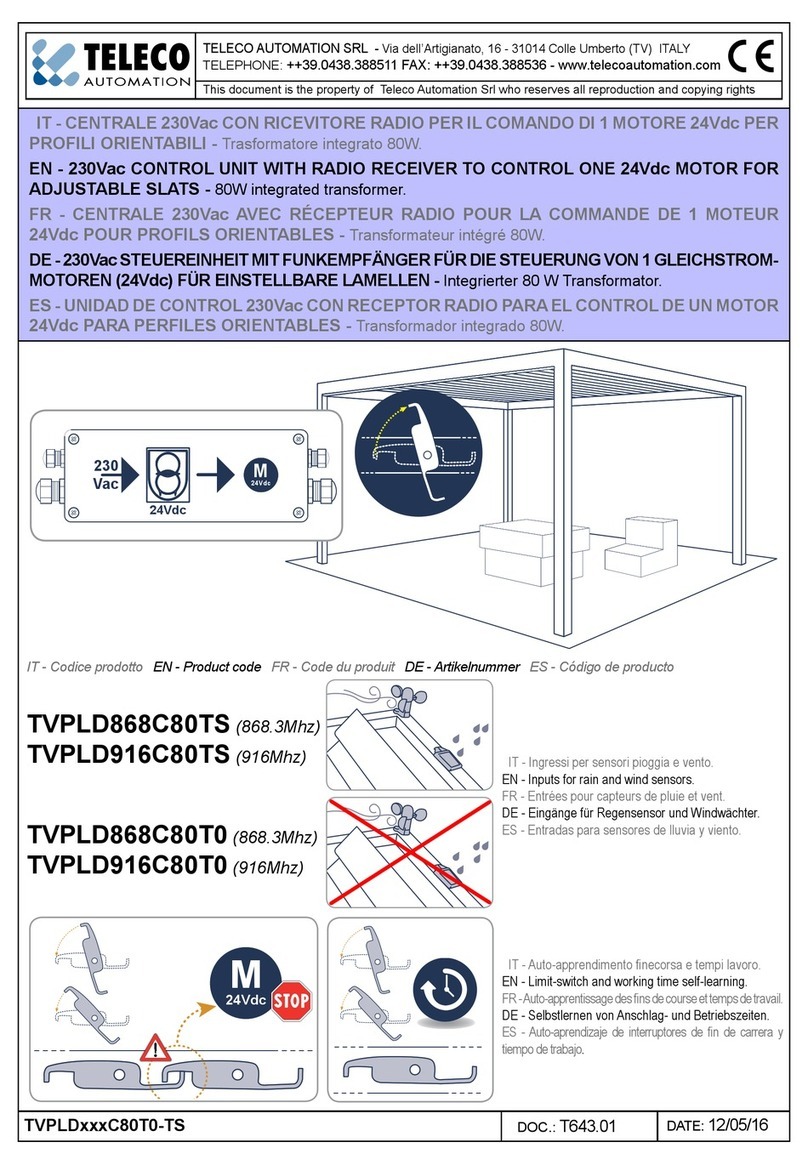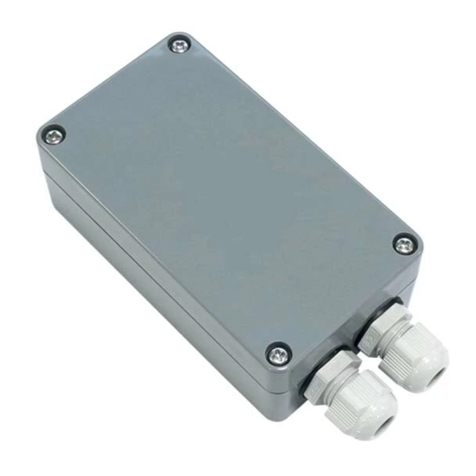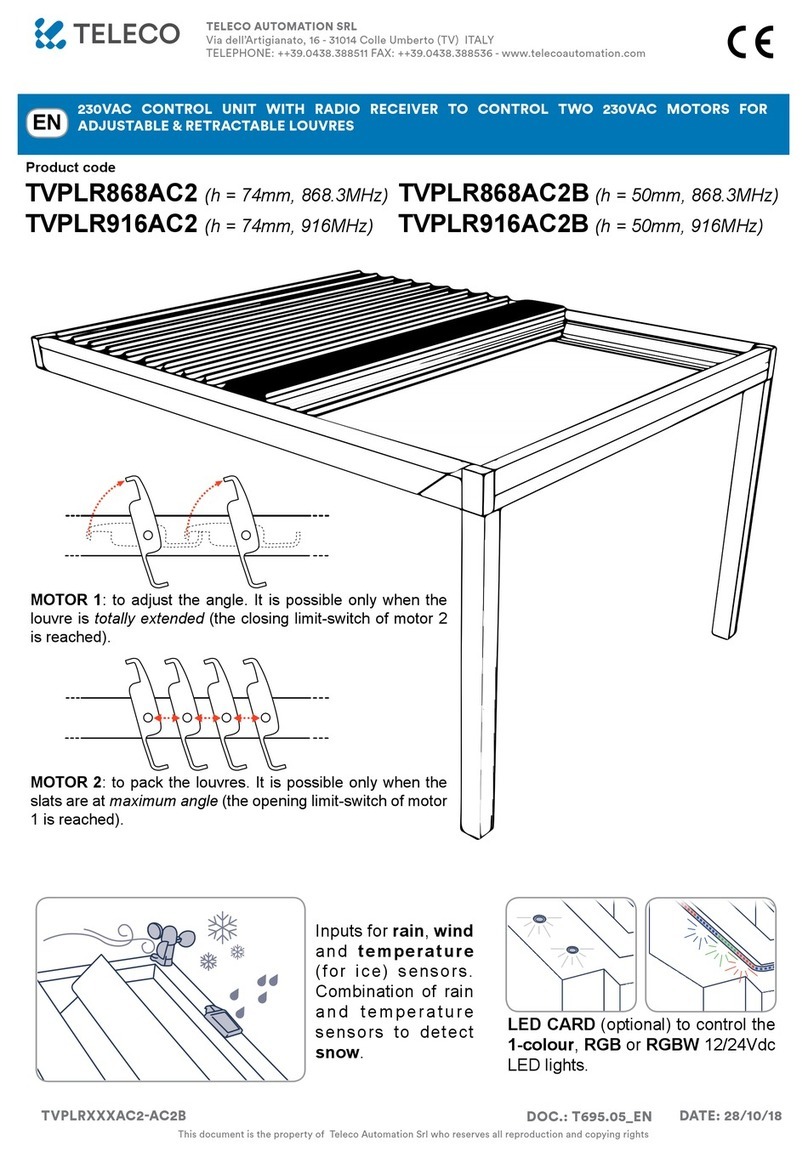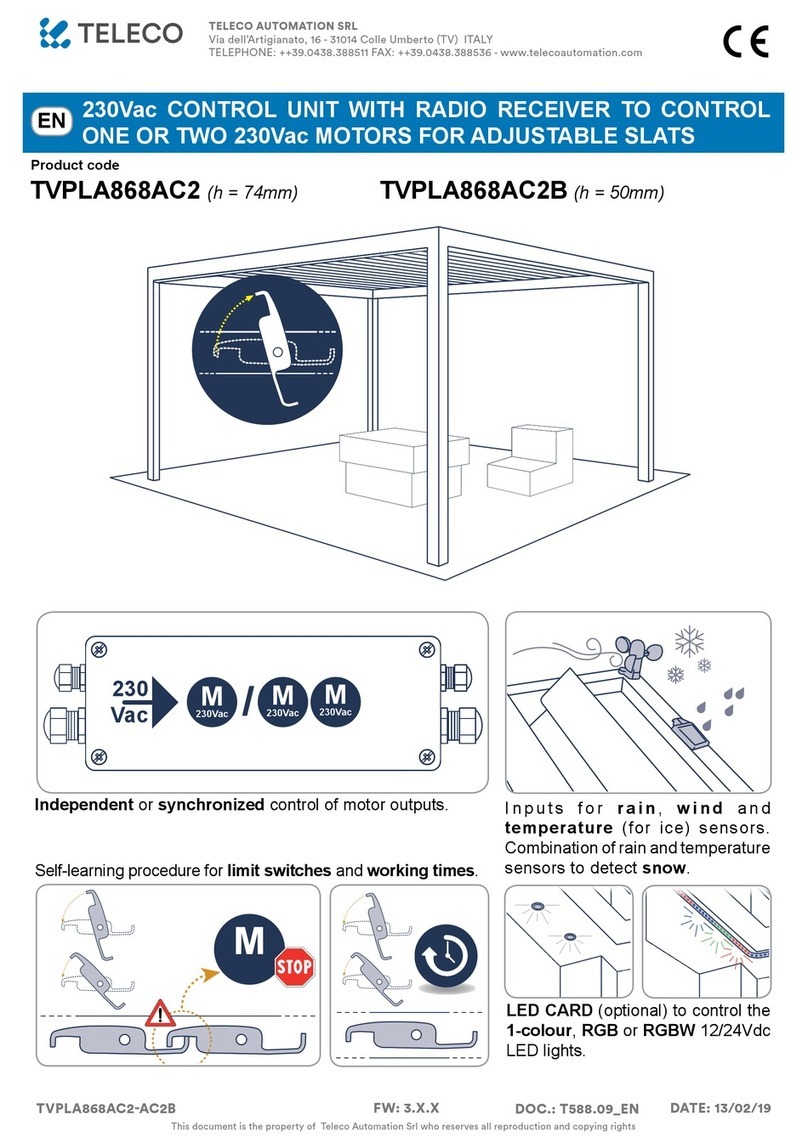
3
M1
M2
1+24V POWER SUPPLY
2 POWER SUPPLY GND
3 MOTOR 1 (OPEN)
4 MOTOR 1 (CLOSE)
5 MOTOR 2 (OPEN)
6 MOTOR 2 (CLOSE)
7 WIND SENSOR (BROWN)
8 WIND SENSOR (BLUE)
9RAIN SENSOR (WHITE, +12V )
10 RAIN SENSOR (BLUE, SIGNAL)
11 RAIN SENSOR (YELLOW, GND)
12 AERIAL RF
13 AERIAL GND
14 TEMPERATURE SENSOR (BLACK)
15 TEMPERATURE SENSOR (WHITE)
16 ENCODER M2 (VDD)
17 ENCODER M2 (Signal A)
18 ENCODER M2 (Signal B)
19 ENCODER M2 (GND)
20 ENCODER M1 (GND)
21 ENCODER M1 (Signal B)
22 ENCODER M1 (Signal A)
23 ENCODER M1 (VDD)
LED COLOUR STATUS MEANING
L1 RED ON until next manoeuvre MOTOR 1: Limit switch or alarm
Flashing during movement MOTOR 1 moving with encoder communication
L2 RED ON until next manoeuvre MOTOR 2: Limit switch or alarm
Flashing during movement MOTOR 2 moving with encoder communication
L3 BLUE ON Synchronized mode activated
One ash every second Synchronized mode activated (during conguration)
One ash every 2 s Independent mode activated (during conguration)
L4 RED One ash every 10 s Water draining alarm (par. 4.4, page 12)
Two quick ashes every 10 s Rain alarm (par. 4.4, page 12)
Three quick ashes every 10 s Ice / Snow alarm (par. 4.2 - 4.3, pages 11-12)
Four quick ashes every 10 s Wind alarm (par. 4.1, page 11)
Five quick ashes Unexpected absorption of one motor in synchronized mode
Six quick ashes Built-in motor limit switch activated
Seven quick ashes Motor stopped by current absorption over the threshold
Eight quick ashes Safety limit switch
Nine quick ashes Encoder signal error. The motor stops.
Ten quick ashes One motor is short-circuited
Twelve quick ashes Encoder signal disturbed. Abnormal motor operation.
One ash every 2 s Rain sensor is deactivated
One ash every 3 s Temperature sensor is deactivated
L5 RED ON Power ON
L3
Optional LED CARD
(only in TVPLAxxxCC2EN version)
Memory
10A Fuse
24V
Power supply
-
+
2
1
6
5
4
3
14
15
13
12
8
7
11
10
9
RAIN
sensor
WIND
sensor
Aerial
P1 P2
TEMP.
Sensor L2
L1
L5
DIP switch
ATTENTION! The electronic
board is protected by a 10A
fuse. The maximum allowed
power, including the plug-in
LED controller board, is 240W.
= Weather sensor alarms (from LOW to HIGH priority)
FIRST POWER ON: at rst power-on, the system is waiting
to be programmed with the memorization of at least one
transmitter (par. 3, page 8) and the conguration of the
motors and relative working time (see next pages).
1CONNECTIONS, ADJUSTMENTS AND CONTROL UNIT WARNINGS
= It takes effect DURING conguration
DIP MEANING
1 - 2 - 3 Setting of wind sensor threshold (see par. 4.1, page 11)
4 - 5 Motor control mode (see pages 4…7)
6Maximum motor current threshold set during conguration
(see par. 2.4, page 7)
not
used
L4
16 17 18 19
20 21 22 23
Encoder M1
Encoder M2
= MOTOR alarms
